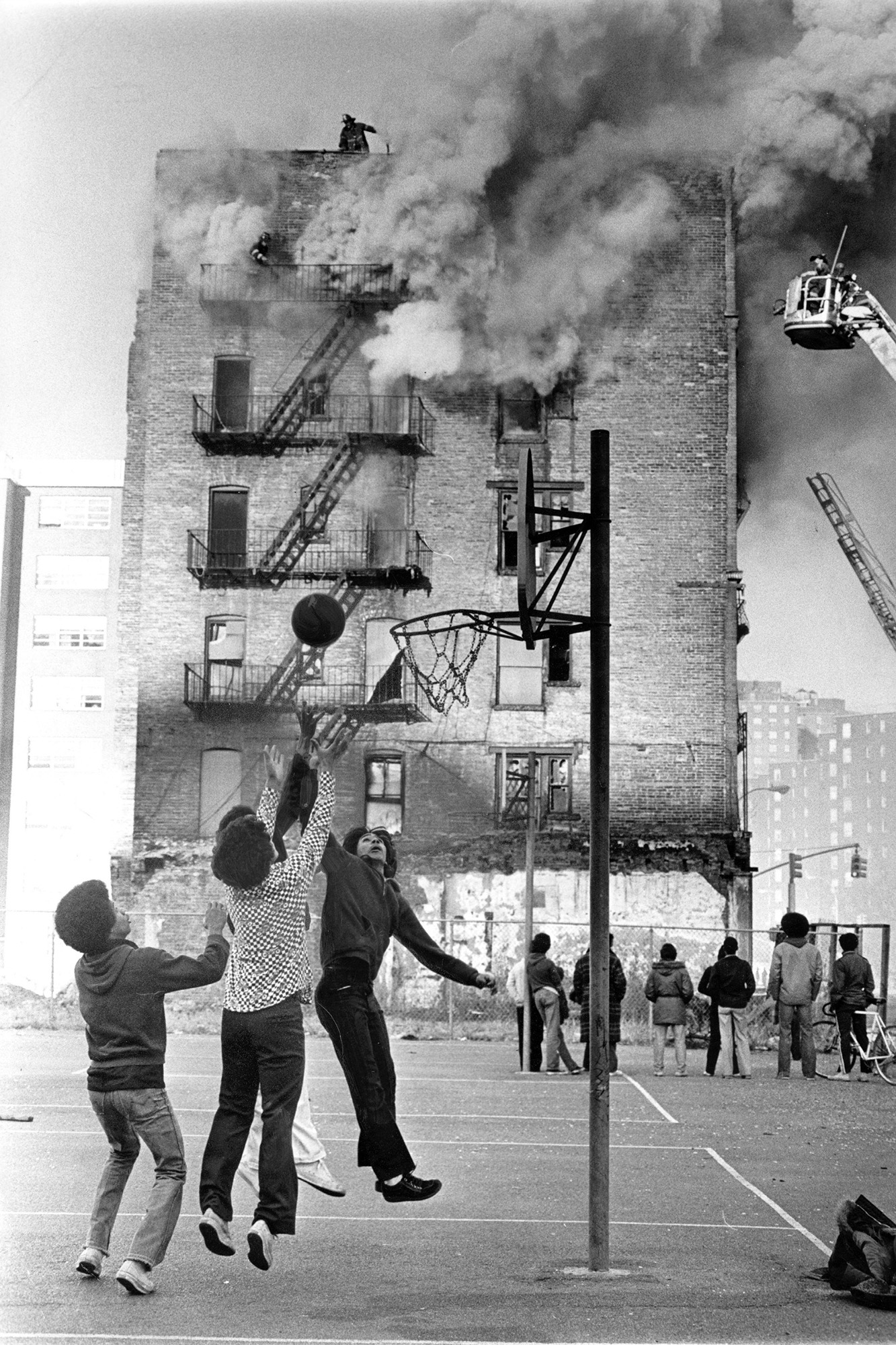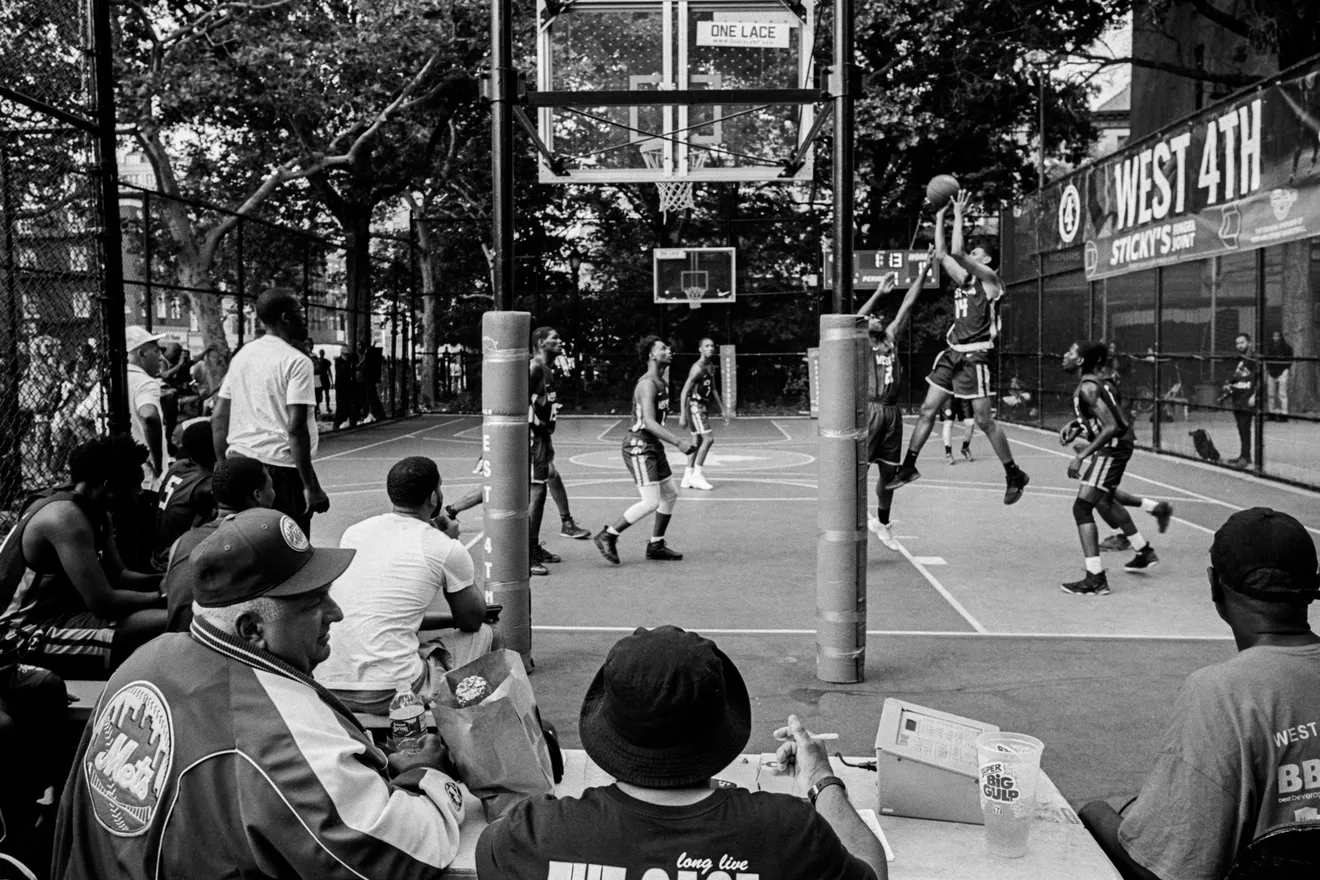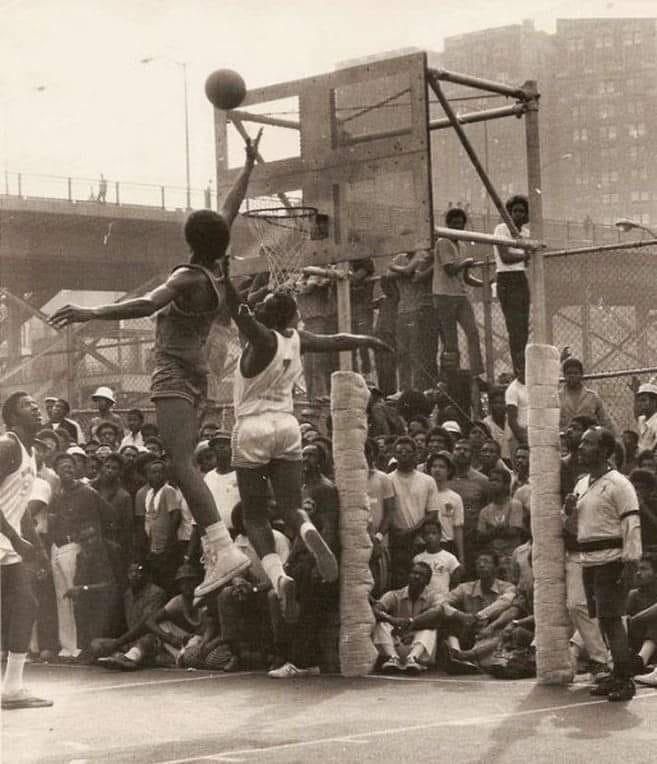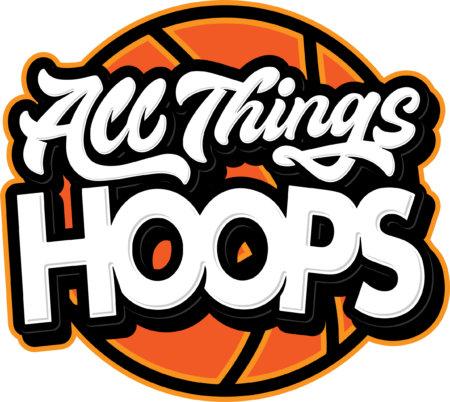From the Playground to the Spotlight: The Rise of Streetball in New York City
New York City has long been regarded as the mecca of basketball, and for good reason. Its bustling streets have served as the breeding ground for some of the greatest basketball players the world has ever seen, and streetball – basketball played on city playgrounds and public courts – has played a significant role in that development and continuing tradition.

There’s nothing like Streetball in NYC in the Summertime . Dyckman is often the hot spot for great games and a NYC atmosphere. Photo courtesy of Redbull.com
Streetball combines athleticism, creativity, and showmanship in a way that few other sports can match, and it’s a style of basketball that has flourished in New York City for decades. There may be no better illustration of this than the legendary Entertainers Basketball Classic (EBC), which plays out in Harlem each summer, pitting some of the city’s top streetballers against each other in a carnival-like atmosphere.
But how did streetball become such a defining aspect of basketball in New York City? The answer lies in the city’s unique history, culture, and love affair with the sport.

Firemen put out blaze at a building on 101st Street at First Avenue burned in 1975 while youths play basketball. Photos courtesy of Paul Hosefros/The New York Times
In the early 1900s, basketball was still a relatively new and obscure sport, even in gyms and colleges. It wasn’t until the YMCA started to organize youth programs around the country in the 1920s and 1930s that organized basketball began to take root. But even then, basketball courts were few and far between, particularly in urban areas where space was at a premium.
That’s where streetball began to emerge as an alternative. Public parks and playgrounds were, and still are, readily accessible to city residents, and they began to serve as informal venues for basketball games. Players often had to improvise, using milk crates or trash cans for hoops and broken glass, and other debris as a makeshift boundary. But despite the makeshift conditions, streetball games were lively affairs, with spectators cheering on favorite players and trash-talking from the sidelines.

The Cage is somewhere you can go and get some good run on any day of the week. Photo courtesy of Curbed NYC
As basketball continued to grow in popularity in the city, local leagues began to form, with communities organizing teams and playing on outdoor courts. These leagues helped formalize streetball, providing structure, rules, and an organizational framework for the game.
The real turning point, however, came in the 1970s, with the rise of hip-hop culture. The music, poetry, and fashion styles of the genre spoke directly to urban kids and spread rapidly across the city. And with it came a new attitude towards basketball.
Streetball became more than just a game – it was a way of expressing oneself and competed within a style that was all its own. Players began to adopt creative nicknames and signature moves, and games took on an electrifying, almost theatrical atmosphere. What had once been a form of recreation had now become a way of life for many young people in the city.

Rucker Park helped propel Streetball into the forefront. Photo courtesy of TIME
One of the defining moments in streetball’s rise to prominence came with the creation of the Rucker Park Tournament in Harlem in the 1970s. Sponsored by the local parks department, the tournament brought together the city’s top players in a series of games, with the winner earning bragging rights and the respect of their peers.
The Rucker Park games, which still take place today, showcased the talent and flair of New York City’s best streetballers, bringing them into the national spotlight and further cementing streetball’s place in the cultural fabric of the city.

NYC will forever be the Mecca of Basketball. Photo courtesy of Redbull
Today, streetball remains an integral part of New York City’s basketball culture. From the storied playgrounds of Harlem to the neighborhood courts of Brooklyn and beyond, the passion for the game burns bright. And while streetball may not have the same formal structure as organized basketball, the style, creativity, and excitement it embodies are as good a showcase of the city’s basketball legacy as any NBA game or college match-up.
*****COVER PHOTO COURTESY OF ANTHONY GEATHERS

